1. Background of Low Carbon City Development
(1) Global Warming and Urban Activities
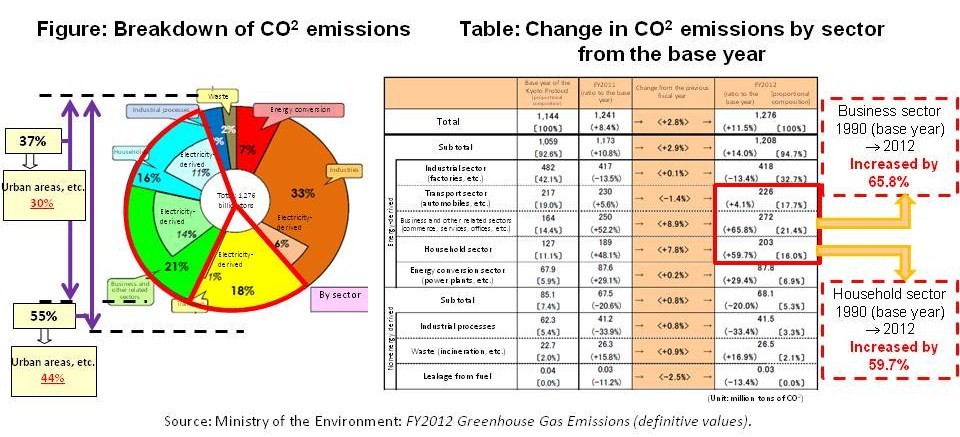
(2) Relationship between Urban Structures and CO2 Emissions
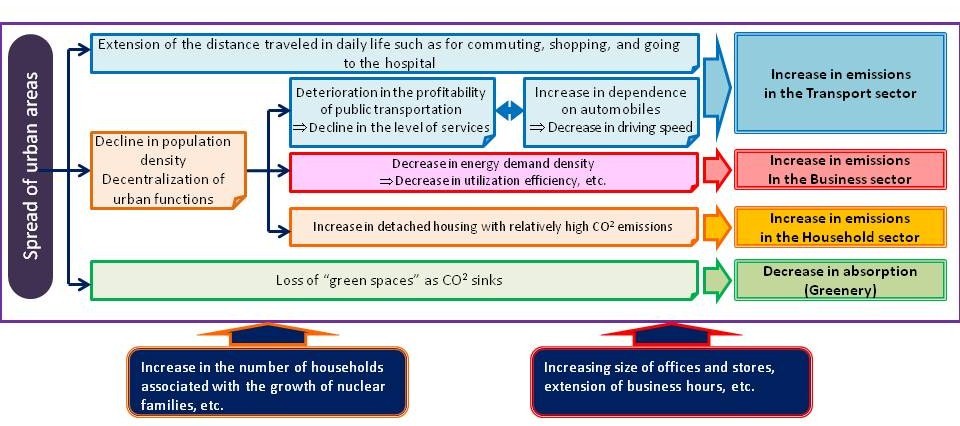
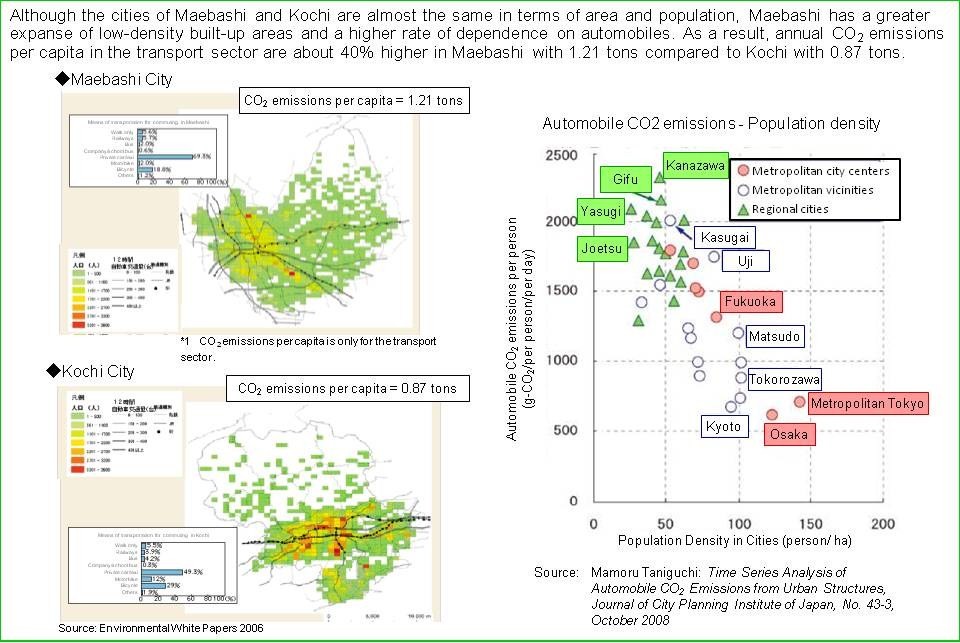
(3)Recent Changes in Social and Economic Situation
■Declining and Rapidly- aging Population
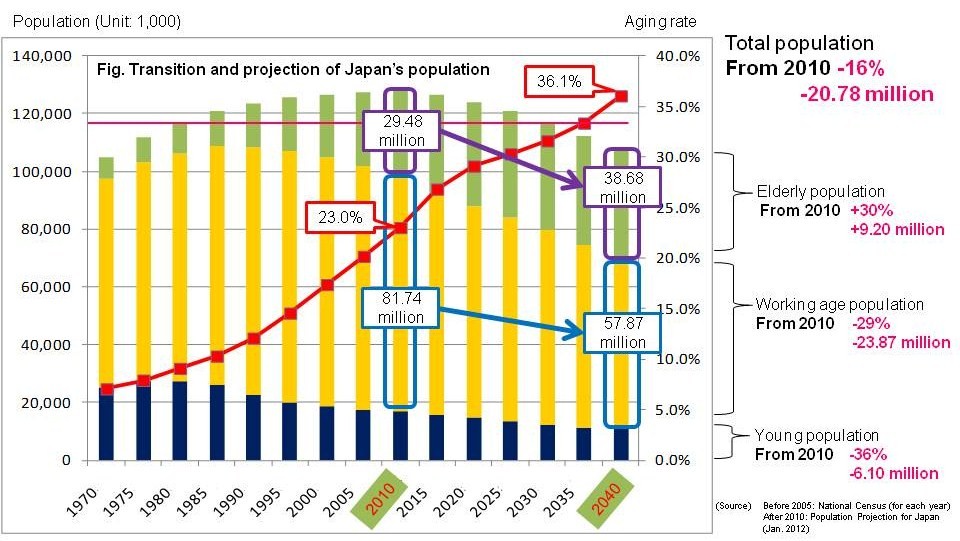
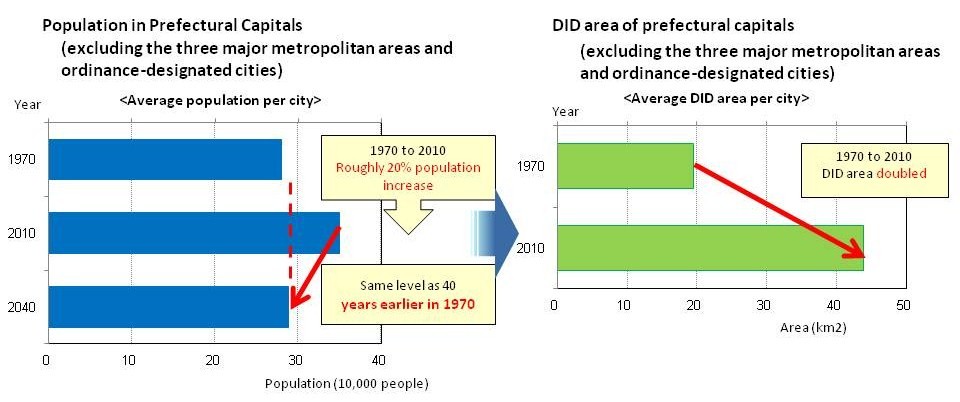
■Deteriorating Financial Conditions
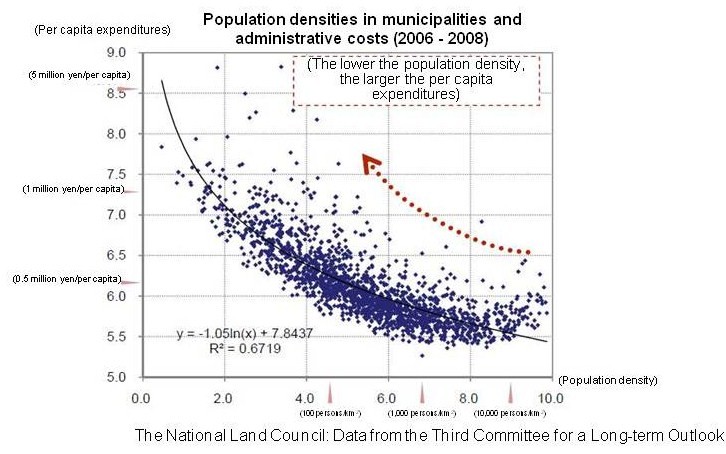
TOP PAGE
2. Outline of Low Carbon City Development
3. Major Actions for Low Carbon City Development
- Approximately 50% of the total CO
2 emissions of Japan are derived from urban activities, thus implementing low-carbon policies in urban areas are a pressing need while the impact of global warming has become apparent. - In particular, the increase in CO
2 emissions in the business and household sectors is significant compared to other sectors. (The emissions in two sectors in 2012 increased by approximately 1.5 times the level of the base year.)
(2) Relationship between Urban Structures and CO
- In Japan, the urban areas had grown “thinner and broader”, due to the concentration of population in cities during the population increasing period.
- These changes of urban structures have had a huge impact on the increase in CO
2 emissions.
(3)Recent Changes in Social and Economic Situation
■Declining and Rapidly- aging Population
- Japan’s population is forecasted to decline by about 20 million people in the next 30 years. During this period, the population will be aging and 1 in 3 people will be 65 years old or older in 2030.
- The average DID area of prefectural capital cities expanded to double while the average population in those cities increased by 20% in the past 40 years.
- However, it is predicted that the average population will decrease by 20%, the same level as 40 years earlier, in the next 30 years.
- The decline of population would make urban areas much “thinner” without taking any measures. Consequently, it would cause several urban problems, such as highly increase in CO
2 emission, impoverishment of the regional economy, etc.
■Deteriorating Financial Conditions
- The municipal revenue is expected to decrease with the decline of Japan’s population, while the municipal expenditure to increase due to such factors as the increase of social security expenditures with the population aging. As a result,the fiscal balance is feared to further deteriorate.
- There is a certain proportional relationship between the density of the population and the per capita administration costs.
- With the financial conditions feared to deteriorate further in the future, it is essential to raise population density and improve efficiency in administrative work in order to maintain sustainable city management.
TOP PAGE
2. Outline of Low Carbon City Development
3. Major Actions for Low Carbon City Development
| □ Contact info for inquiries Ministry of Land, Infrastructure, Transport and Tourism City Planning Division, City Bureau 2-1-3 Kasumigaseki, Chiyoda-ku, Tokyo 100-8918 Tel: +81-3-5253-8409 E-mail: tokei@mlit.go.jp |
